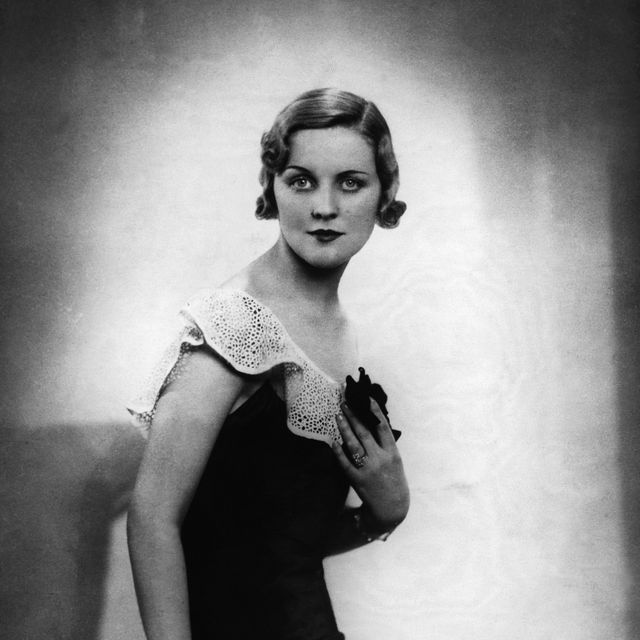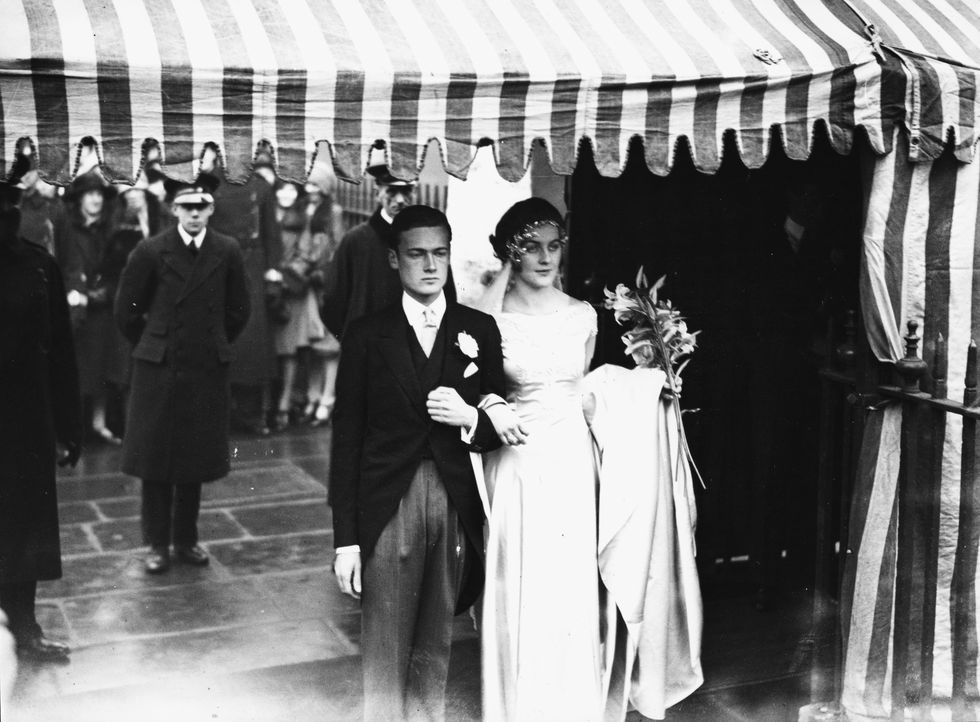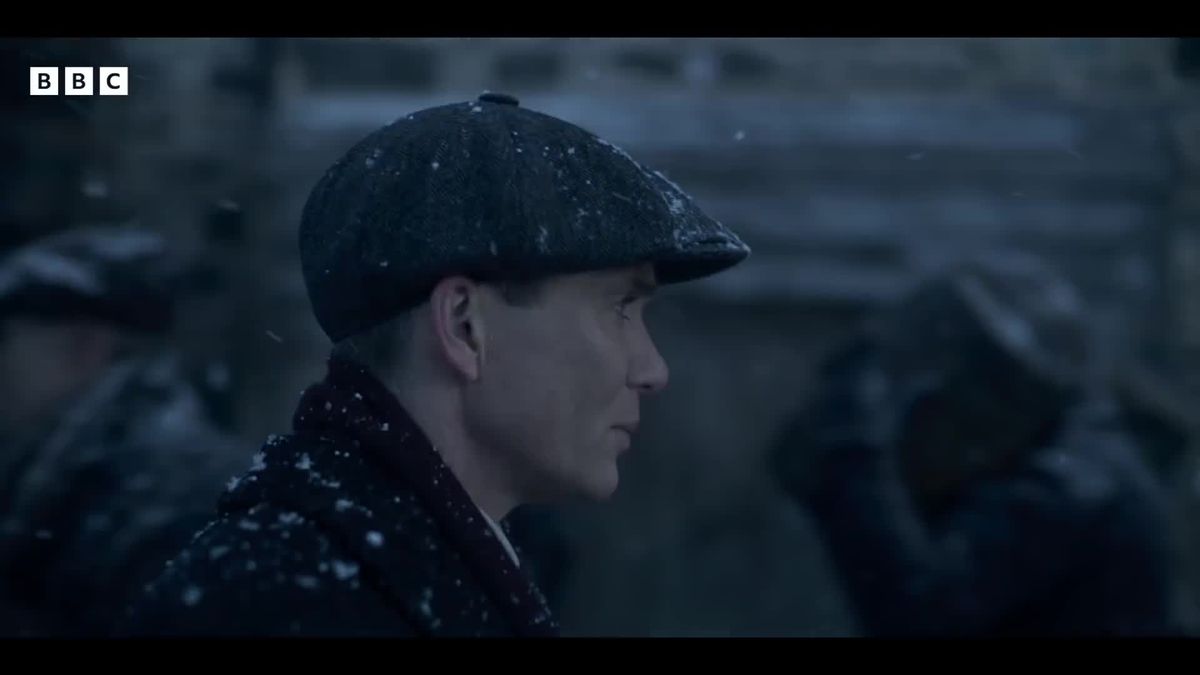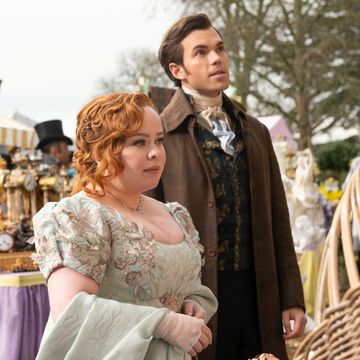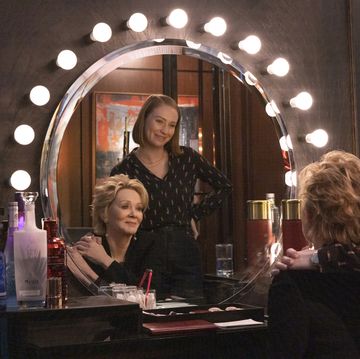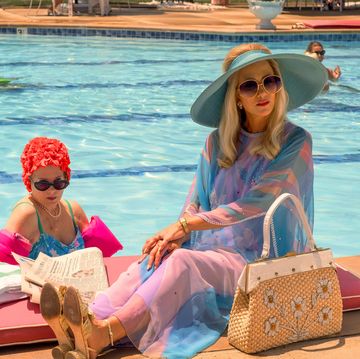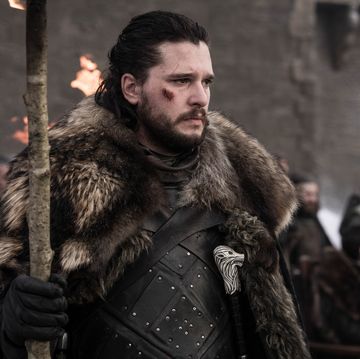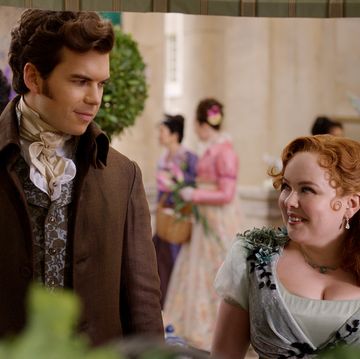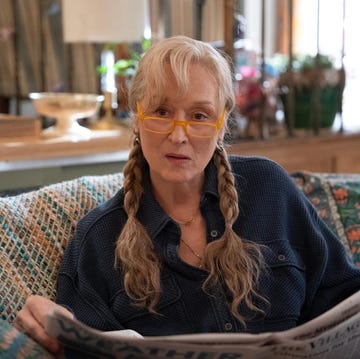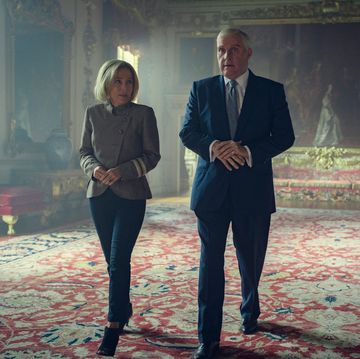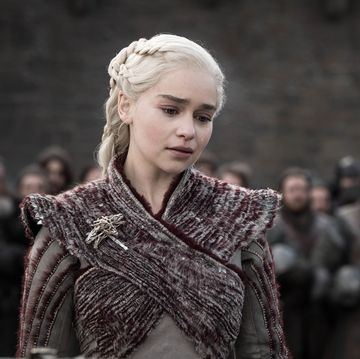In the sixth and final season of Peaky Blinders, the Shelby Company Ltd. is expanding its off-books political venture, bringing notorious British fascists, Boston gangsters, and the Irish Republican Army to the same negotiating table. Real-life socialite and Bright Young Thing, Diana Mitford (Amber Anderson), is introduced as one of the conspirators who wants Great Britain to follow in the footsteps of 1930s Germany and Italy. In the new set of episodes, Diana has swapped the lavish fancy dress parties and aristocratic artistic pursuits that previously led to a tabloid feeding frenzy (and the Bright Young Things moniker) for something sinister.
Throughout its run, Peaky Blinders has deftly blended fact with fiction. Tommy Shelby’s (Cillian Murphy) rise from organized crime boss to a politician is an invention of the series, but the Birmingham gang he leads was very much real. In the show, Tommy’s reign begins after he returns home from WWI, and over the course of five seasons, he has faced off against both other crime leaders and government officials. Reality and story telling blur as Tommy goes toe-to-toe with famous historical figures like Winston Churchill and Sir Oswald Mosley (Sam Claflin). Tommy has gone from a thorn in Churchill's side to an ally, whereas he attempted to assassinate Mosley at the end of season five—and failed spectacularly.
A time jump from the 1929 Wall Street Crash economic slump to Christmas 1933 puts Tommy on a collision course with another war. The first season began in the ashes of WWI, and even years later, the Peaky Blinder leader-turned-politician still experiences vivid flashbacks to his time serving in France. A fancy country estate and brushing shoulders with aristocracy have not gone to Tommy’s head, and his working-class background is part of why he is so beloved in his community. It's also one of the reasons why Diana finds him so fascinating when she first locks eyes on him at the British Union of Fascists (BUF) rally.
In real life, the BUF was founded in 1932 (the year before Diana met Mosley) and used the growing unemployment crisis to entice the working class while appealing to the aristocracy with its anti-Communism stance. Mussolini inspired the simple all-black uniform (hence the name Blackshirts). Of course, virulent anti-Semitism ran through Mosley’s platform to mirror the Nazi movement, and Peaky Blinders incorporates this element as well.
As the threat sweeping Europe is edging closer to reality in season six, Steven Knight’s series is again incorporating historical people and events into the drama. But who was the real Diana Mitford, and how does she fit into the pre-WWII Peaky Blinders story?
Diana Mitford’s Early Life
In the second episode of the final season, Sir Oswald Mosley introduces his mistress as Lady Diana Mitford. In real life, Mitford was the third daughter of the 2nd Baron of Redesdale, David Mitford. The six Mitford sisters (and their brother Tom) were born between 1904 and 1920 and came of age as the world lurched between catastrophic conflicts. “Take six girls, all of them rampant individualists, and let them loose upon one of the most politically explosive periods in history,” writes Laura Thompson in the in-depth 2016 biography The Six: The Lives of the Mitford Sisters.
Novelist Nancy, Farmer Pamela, Fascist Diana, Nazi Unity, Communist Jessica, and Duchess Deborah is a simplistic overview of each woman. Still, as far as broad brushstrokes go, it offers a guide to the varied paths each Mitford sister took and why they were a 20th-century tabloid sensation that could rival the Kardashians. Nancy’s best-selling novels that chronicled her eccentric family include The Pursuit of Love, which Emily Mortimer recently adapted with Lily James starring in the leading role. It is a reminder that while the Mitford name might not have the instant recognition it once had, there is still fascination surrounding this set of siblings.
Diana Mitford was born in June 1910, putting her at 23 in her first Peaky Blinders episode. The New York Times would go on to describe her role in the sibling lineup as, “In a family of dazzling girls, Diana dazzled perhaps the brightest.”
Before Diana met Mosley, she had had already studied in Paris, wed the heir of the Guinness (yes, the iconic Irish company) fortune, had two children, and obtained a divorce that caused quite the scandal. Married in 1929 (with objections from Diana’s father), theirs was the wedding of the social season that put all eyes on debutante Diana. Bryan Guinness was five years older than his bride and was part of the Bright Young Things scene (along with Cecil Beaton, Evelyn Waugh, and Tallulah Bankhead), but he was less inclined to the mingling of this social set. He also wasn’t as opinionated regarding politics, which caused a rupture. In Peaky Blinders, Tommy eventually uses Diana’s connections to her former in-laws to secure funding for charitable housing that he so desperately wants to ensure to pass.
Diana Mitford's Political Interests
While Guinness didn’t show too much interest in the changing political landscape, Oswald Mosley is far from the first politician that Diana encountered.
Charting Diana’s journey toward becoming one half of the BUF’s ‘It Couple’ starts with a political leader who vocally opposed Mosley’s ideology. Diana visited Winston Churchill’s Chartwell home as an adolescent and was friends with his son Randolph (who had a crush on Diana). Churchill’s wife Clementine was Diana’s cousin, and she affectionately referred to the couple as “Cousin Clementine” and “Cousin Winston.” But long before meeting Mosley, she disagreed with Churchill's politics and approach.
The connections to Churchill don’t stop there. Younger Mitford sister Jessica abhorred Diana and Unity’s turn toward fascism and refused an invitation to have tea with Hitler. In 1937, that Mitford ran away to Spain during the civil war to help the anti-fascist cause with her soon-to-be husband, Esmond Romilly. Romilly also happened to be Winston Churchill’s nephew.
While the Mitfords had titles and were well connected, they were also “cash poor.” Still, the threat of Communism made the growing Fascist cause an enticing one for the upper classes selfishly concerned about the assets they did hold.
Oswald Mosley’s Many Mistresses
Since his introduction in season five, Oswald has patronized his neighboring MP (Tommy’s constituency borders Oswald’s) and taken great pleasure in pointing out Tommy’s outsider status. He reveled in the knowledge that he slept with Tommy’s wife, Lizzie (Natasha O’Keeffe), when she was a sex worker, but Tommy has also done his research and knows Oswald has been cheating on his wife with her sister and step-mother. That part is true to history; Mosley did hook up with two generations of the same family.
“Oswald’s most recent and last ever mistress” is how Diana introduces herself to Tommy and Lizzie, but this was far from the case in both the series and reality. Mosley was unfaithful throughout their marriage until he died in 1980.
“Tonight, he will be here with his mistress, who is apparently a Lady of some standing and has given him great comfort in his time of grief,” Tommy tells Lizzie in the second episode of season six. Mosley’s first wife, Lady Cynthia “Cimmie” Mosley, died in 1933 and was more than aware of her husband’s infidelity as discretion was not attempted (including disappearing for hours at a party that Cimmie was also at). In Mrs. Guinness, Spence quotes Cimmie’s and Oswald’s daughter, Vivian, saying, “Peritonitis is what killed her… But with Diana there, she didn’t want to live.”
Cimmie was a big supporter and contributor to her husband’s political career, which saw him switch parties from the Conservatives to Labour (Tommy’s party on the show) before becoming an Independent who launched the BUF. In Peaky Blinders, Mosley refers to Diana as “the engine of my enterprise.” As Knight’s series depicts, the fraught 1934 rally held at the Olympia in London had an estimated 10,000 people in attendance. Still, it was a blip compared to Hitler's Nuremberg rallies that Mosley wanted to emulate.
Not everyone was a supporter, and anti-fascist protestors infiltrated this event as depicted in Peaky Blinders. Whereas the historical drama hits on the night's mood, one big difference is that Diana was not by Mosley’s side on the Olympia stage as she had “retired to bed with a temperature.” The tide was turning against Fascism in the UK, with Spence describing how, at this stage, “To many Britons, Mosley was a figure of hate, and they felt the BUF must be stopped.”
Diana Mitford’s Friendship with Hitler
Diana is hardly coy when she references “our friend in Berlin” to Tommy, and she did socialize in Germany with Hitler in real life. Her younger sister Unity is more commonly associated with the Third Reich, but Diana accompanied her to rallies, the 1936 Munich Olympics, and Joseph Goebbels’ villa. In Berlin, Diana would marry Mosley in secret with only a handful of people attending the 1936 nuptials— including Hitler, Goebbels, and her sister Unity. It only became headline news in 1938 because Diana had her third child (and first with Mosley). Diana didn’t care who found out at the time, but Mosley was still managing a delicate situation with his dead wife’s family.
Peaky Blinders uses this wedding to aid a pivotal plot twist in the series finale, which we shan’t spoil here. But no, the newspaper coverage was not what the show depicts, even if Hitler was present.
In 1940, Mosley and Mitford were interned at Holloway Prison in London and would spend the next three years there. Nancy reported her sister’s anti-Semitic remarks (and those of Pamela Mitford) to MI5: "She is a ruthless and shrewd egotist, a devoted fascist and admirer of Hitler, and sincerely desires the downfall of England and democracy in general." However, Nancy’s remarks were not the reason for her arrest, as comments directly made by Diana led to this decision. Thompson notes that the Advisory Committee concluded after interrogating Diana that she “could be extremely dangerous if she were at large.” The sisters reconciled in 1973 when the family gathered to say goodbye to the oldest Mitford sibling just before she died. Diana discovered that her sibling had voiced her concern to the Foreign Office only after Nancy's death.
In 1989 when Diana appeared on the BBC radio show Desert Island Discs, she said about her friendship with Hitler, “I can’t regret it.” This unrepentant stance undoubtedly informed how Peaky Blinders portrayed the controversial figure who became a social pariah in Britain in the 1930s.
“Mostly, I do whatever I want to do,” she tells Tommy Shelby. Diana Mitford’s history is already written, but with a forthcoming movie to conclude the Peaky Blinders story, there is still time for Diana to try to enact her will and political ideology on this story.

Emma Fraser is a freelance culture writer with a focus on TV, movies, and costume design. You can find her talking about all of these things on Twitter.
